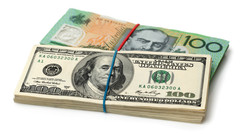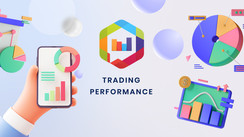The European trading session is the second-largest trading session in the world, after the North American session. It runs from 7:00 AM GMT to 4:00 PM GMT, and is centered around the financial centers of London, Frankfurt, and Paris.
The European session is a popular time to trade for a number of reasons. First, the volume of trading is high during this session, which can lead to more opportunities for profit. Second, the volatility of the market is typically lower during the European session, which can make it easier to trade. Third, the European session is often seen as a more stable time to trade, as there are fewer major news releases during this time.
How to Choose the Right Time to Trade During the European Session
There are a few factors to consider when choosing a time to trade during the European session. These include:
Your trading style: If you are a day trader, then you will need to choose a time to trade when the market is most active. This is typically during the early morning hours of the European session. If you are a swing trader, then you can trade at any time during the European session.
The news calendar: It is important to check the news calendar before you trade during the European session. This will help you to avoid trading during times when there are major news releases, as these can cause the market to be volatile.
Your own personal preferences: Some traders prefer to trade during the early morning hours of the European session, while others prefer to trade later in the day. Ultimately, the best time to trade during the European session is the time that works best for you.
How to Identify the European Trading Session
The European trading session can be identified by looking at the time of day and the location of the financial centers that are active during this time. The European session typically starts at 7:00 AM GMT and ends at 4:00 PM GMT. The financial centers that are active during this time include London, Frankfurt, and Paris.
Experts' Opinions on Trading During the European Session
There are a number of experts who believe that trading during the European session can be a profitable strategy. They point to the high volume of trading and the lower volatility of the market during this time as reasons for their optimism.
However, they also caution that traders should be aware of the risks involved in trading during the European session. These risks include:
The time difference: The European session takes place in a different time zone than many other parts of the world. This can make it difficult for traders to trade during this time if they are not used to the time difference.
The news calendar: The European session is often affected by major news releases. This can make the market volatile and difficult to trade.
The liquidity: The liquidity of the market can be lower during the European session than during other times of the day. This can make it more difficult to trade large positions without affecting the price of the asset.
How the European Trading Session Affects Trading
The European trading session can have a significant impact on trading. The high volume of trading during this session can lead to more opportunities for profit. However, the lower volatility of the market can also make it more difficult to trade.
Traders who are considering trading during the European session should be aware of the risks involved and should have a trading strategy that is suited for this time of day.
Conclusion
The European trading session is a popular time to trade for a number of reasons. However, it is important to be aware of the risks involved and to have a trading strategy that is suited for this time of day.





